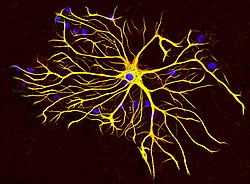Replacing damaged brain cells reveals a possible cure for Parkinson's Disease

Parkinson's disease (PD) is a chronic disorder that gets increasingly worse over time. It involves the malfunction and death of vital nerve cells located in the brain. Patients with PD suffer with symptoms like tremors (of the hands, arms, legs, jaw, and face), impaired posture and coordination, bradykinesia (slowness of movement), and more. In recent months, researchers have discovered a way to transform glial cells of the brain into dopamine-producing brain cells. The dopamine these cells produce is a neurotransmitter that sends signals to the substania nigra, a part of the brain that is associated with movement and coordination as well as other areas of the brain. The dopamine-producing cells in the brain of an individual diagnosed with Parkinson's are damaged which leads to a lack of dopamine in parts of the brain and cause tremors, impaired balance and coordination, and slow movement. Neurons from fetal mid brain tissues were the first form of transplant experimented with, however, due to the difficulties of obtaining these neurons, stem cells or reprogrammed cells are often used.
Professor Ernest Arenas and his colleagues of the Karolinska Institute of Sweden have furthered the research of transplanting and study the process of reprogramming cells, which avoids transplanting cells in the brain by converting existing cells into other cells, like dopamine-producing cells. The researchers combined certain genes that shape dopamine cells with transcription factors. The research conducted by these scientists and the works published is
Nature Biotechnology has proven to be a significant step forward in the process of curing the millions of people who suffer from Parkinson's worldwide. If further studies take place, even more genes that promote the generation of dopamine cells and will give an even larger possibility of terminating Parkinson's disease.


